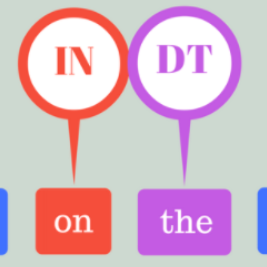To accomplish punctuation restoration, most existing methods focus on introducing extra information (e.g., part-of-speech) or addressing the class imbalance problem. Recently, large-scale transformer-based pre-trained language models (PLMS) have been utilized widely and obtained remarkable success. However, the PLMS are trained on the large dataset with marks, which may not fit well with the small dataset without marks, causing the convergence to be not ideal. In this study, we propose a Feature Fusion two-stream framework (FF2) to bridge the gap. Specifically, one stream leverages a pre-trained language model to capture the semantic feature, while another auxiliary module captures the feature at hand. We also modify the computation of multi-head attention to encourage communication among heads. Then, two features with different perspectives are aggregated to fuse information and enhance context awareness. Without additional data, the experimental results on the popular benchmark IWSLT demonstrate that FF2 achieves new SOTA performance, which verifies that our approach is effective.
翻译:为了完成标点恢复,大多数现有方法侧重于引入额外信息(例如部分语音)或解决阶级不平衡问题。最近,大规模基于变压器的预先训练语言模型(PLMS)被广泛使用并取得了显著的成功。然而,对PLMS进行了关于带有标记的大型数据集的培训,这些标记可能与小数据集没有标记的数据集不相适应,导致趋同不理想。在本研究中,我们提议了一个功能化的分解双流框架(FF2)来弥合差距。具体地说,一条流利用预先训练的语言模型来捕捉语义特征,而另一条辅助模块则捕捉手头语特征。我们还修改了多头注意的计算方法,以鼓励头人之间的沟通。然后,将两个不同视角的特征合并在一起,以整合信息并提高背景意识。如果没有更多的数据,流行基准IWSLT的实验结果就表明FF2取得了新的SATA性能,这证明我们的方法是有效的。





